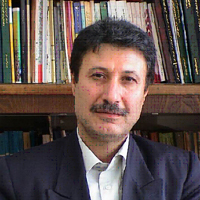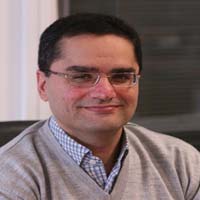Measuring the Effective Variables on Urban Expansion and Physical Development Simulation of Hamadan City Using Integrated Model of Cellular automata, Logistic Regression and Markov Chain
Urban development and irregular migration of rural population to urban areas are significant phenomena that have damaged agricultural lands, natural landscapes, and public open spaces. This issue doubles the need for informed guidance and spatial organization to better understand the processes of urban development for future planning. The present study aimed to evaluate the growth of Hamedan city from 1996 to 2019 and then simulate until 2041. The research method is descriptive-analytical, and the cellular automation model was used to simulate physical development, and logistic regression was applied to analyze the impact of different variables on physical growth and the Markov chain was used to analyze user changes. The validity of Landsat satellite images is also evaluated with respect to the kappa value and acceptable overall accuracy. The results indicate that city center and agricultural land variables with ROC of 0.873 and 0.881, respectively, had the most impact on Hamadan urban growth during the last 23 years. The area of urban areas in 1996 was doubled compared to the year 2011, and almost 2.5 times more than in 2019. On the other hand, population growth increased 1.48 times over the past 23 years. This indicates that the growth rate of urban areas exceeded the population growth rate in Hamadan. The results of the model evaluation indicate that the integrated model is able to provide a precise understanding of urban processes and developments such as evaluating past developments and predicting directions and rates of future physical development.
-
Explaining the capacities of Advocacy planning to improve social indicators in small towns, a case example: small towns in the north of Hamedan province .
Seyed Mohammad Javad Hoseyni*, Amirhoseyn Porjohari, Kianoush Zakerhaghighi
Haft Hesar Journal of Environmental Studies, Spring 2025 -
Pathology of sustainable spatial-physical development management in the southern part of Tehran metropolis
Mosadegh Khorshidinasab, Seyed Abbas Rajae, Hossein Mansourian, Keramatalah Zayyari
Geography, Spring 2025 -
Analysis of the effects of second homes on the sustainable development of rural areas with a future research approach (case study: Kalardasht county)
Shain Jafari *, Amirhossain Pourjohari, Kianoush Zaker Haghighi
Journal of Geographical Engineering of Territory, Winter 2025 -
An Analysis of the Impact of Intelligent Transportation Systems (ITS) on Urban Transportation in the Metropolis of Tabriz
*, Saeed Ghasemi
Journal of Geography and spatial development, Winter 2025



